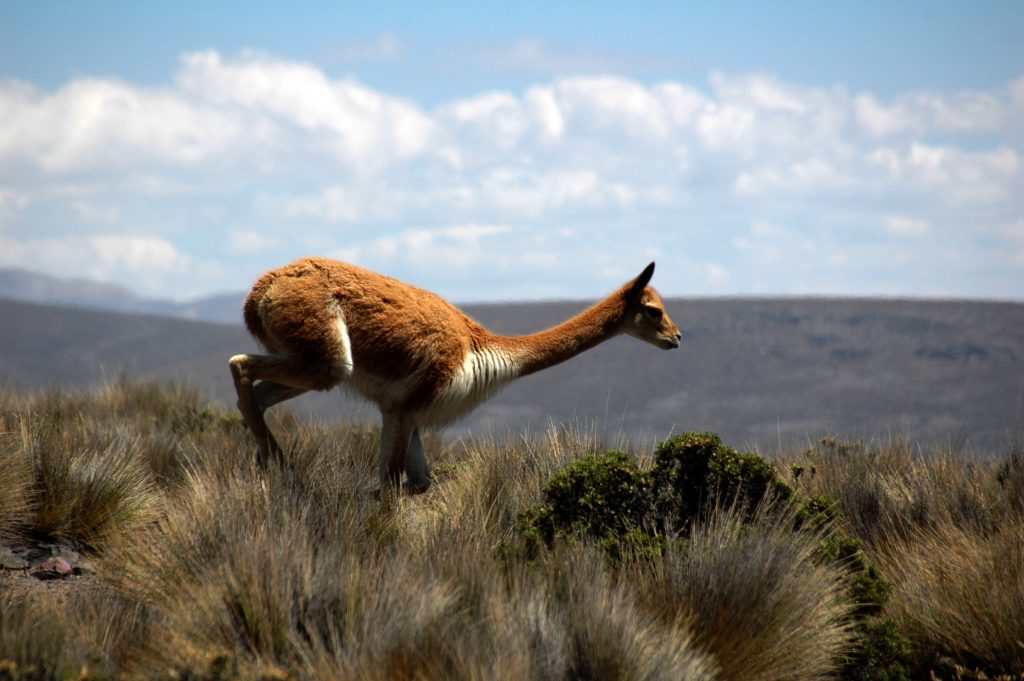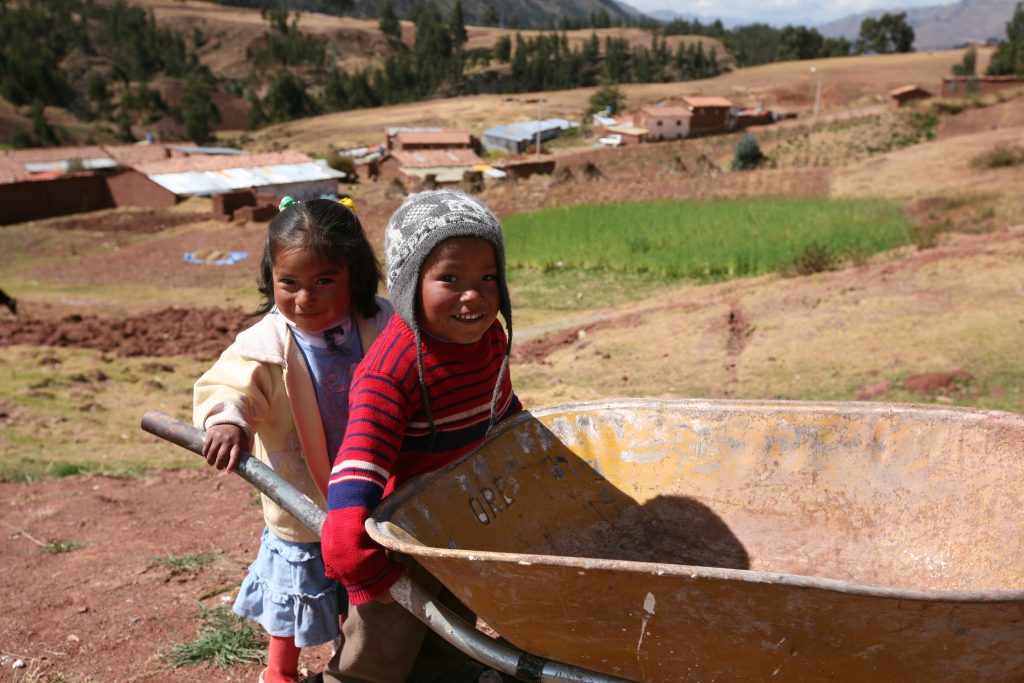We arrived at the base of Mt. Fuji around 10am Monday morning and easily found the cabin. We then drove up the mountain to 5th station on the Subaru-line. This is a very popular take off point for Fuji-san climbers, it’s also a very popular tourist stop. There are stacks of shops with all kinds of the usual souvenir junk, all with the mountain peak looming overhead. The sea of clouds below us was obscuring most of our view of the land below, but we could get a glimpse through here and there. This was just a survey round. We weren’t going to start climbing the 3,776 meter (12,385ft) peak until 10pm with the intent of being on the top for sunrise the next morning. This was to make sure we knew were to go, to scout out parking and have a general feel for the area, as it would be dark at 10pm. And as it turned out, it would be pouring rain as well.
Lunch today would be McDonalds, or “Macca’s” as Nat would say in her fun Australian accent. After that, we went back to the cabin packed our bags for the trail and took a nap until about 8pm. Nat put together a solid spaghetti dinner which carbo-ed us up and we headed back to 5th station. Knowing rain was in the forecast, we packed appropriately and were glad we did. Just moments after parking the car and as we were getting our packs ready under the shelter of the hatchback door, the rain started to come down in buckets. At this altitude (2,300m/5,474ft) and time of day, the air was cool enough to tolerate having a rain jacket on. But once we got going, things warmed up and I found myself unzipping my jacket to let some body heat escape.
The climb was fairly steep and the footing wasn’t always secure. Once we got out of what little was left of the sparce tree cover, the ground just turned into crumbly and loose volcanic cinder rocks. At times we had to treat it like snow, kicking a step in the loose rock before trusting our weight on it. The rain persisted for about an hour and a half, after which it wouldn’t decide between a light and very heavy drizzle.
The nice thing about the rain was it moved most of the Japanese climbers off the trail and into the huts for shelter. Once the rain let up and we got higher to some of the cabins where people had climbed to earlier yesterday, people started emerging after what sounded like a poor attempt at sleep and the trail quickly became thick with climbers of all sorts. Most of them were in climbing tour groups. Natalie and I got stuck in the slow line walking up the trail like animals being herded from one corral to another. Conveniently, they rested often and that gave Natalie and I a chance to get past and back on the open trail.
When we arrived at a hut at around 3,400m we were told we only had about an hour to go before we reached the summit. Not knowing what shelter would be available on the top, we decided to accept the invitation to rest in this hut out of the cold driving wind before our final push. We were now above the clouds, so the rain and drizzle had yielded to a very fine occasional mist as higher altitude clouds blew by the mountain leaving some of their moisture on our almost dried out rain jackets and pants. The high mountain air was cool, dry and thin. It swept most of the moisture from our clothes pretty quickly. Not to mention drying out our mouths.
We took this chance to snack up, get more water and get our packs off for about an hour. The tour groups had fallen way behind us. Only as we were heading out had the first of them made it to this point and were sitting on the benches outside taking another rest. Patrons of the hut we rested in were just getting up and getting going as well, so Nat and I decided to get started ahead of them and risk what extra time we might have exposed on the summit before the sun broke over the horizon and started to warm things back up.
About half an hour after we left, the celestial dawn started to chase away the darkness on the horizon of the eastern sky and we knew we had timed it just right. We soon arrived at the first torii indicating the summit area was mere steps away. We stopped for a moment and took our first few sunrise photos, setting the cameras on some rocks and letting the frame expose from 10 – 15 seconds.
Since Fuji-san is a volcano, which is mostly to blame for its nearly perfect conical shape, the summit area is the rim of the crater, which has huts, shrines and weather stations built all around it. Where we popped up was straight across the crater from the true summit, but it was the eastern side, and the best for viewing the sunrise.
The next hour consisted of me burning off about a roll and a half of film documenting different stages of the sunrise from different angles and compositions in the foreground. It seemed every time I turned around, I found another torii to use as a foreground subject and to silhouette against the bright reds, oranges, yellows, purples, and blues creeping up the sky and across the sea of clouds or “unkai” as the Japanese call it.
After stabilizing the tripod with a few rocks to protect it from the strong summit winds, Natalie and I got a picture of ourselves, bathed in the warm orange glow of the early morning light with a highly decorated torii in the near background and the true summit way behind us.
That soon changed as we walked around the summit crater route and looked down the west side of Fuji-san and got a very cool view of the profile of the mountain we were on via the long shadow it projected on the clouds and land below us. Another half hour and we were back on our side of the mountain ready to head down to the car.
Going down, I don’t know where we got the energy, but we practically skied down. We let the loose volcanic rock slide and tumble under our feet and really tear up our shoes. It also turned out, no surprise really, that most of the mountain managed to find its way into my shoe and I had to stop and empty my shoes and socks a few times as we went down.
For Fuji-san, climbing down is done on a different route, the descending route oddly enough, and because we were on a different path, as we expected, we didn’t realize we had drifted down the wrong side of the hill and ended up a long ways away from our car. Bummer. The great thing about traveling with Nat was that regardless of how tired or exhausted we were when a bump in the road came up like this, she played it totally cool and just moved on to whatever had to be done to fix things. In this case, we had to walk down the paved road, as there were no busses, to the closet bus stop 8 km away and get ourselves back up the mountain to where the car was parked. About a 5 hour event all up.
As it turned out, we were able to hitch a ride down, Nat got off by the cabin and walked there so we only had to pay for one bus ticket to get up to where the car was. It only took about 3 hours to sort out. We came off the trail at about 10am, making it an even 12 hours on the mountain, both of us back at the cabin by 1 o’clock.
After getting back to the cabin, we had a little snack, got cleaned up, and relaxed a little. That night we weren’t to keen to do any cooking and went out to a nice Japanese restaurant and had some excellent tempura and got to bed early as we had to leave around 6am to get back so I could make it to my first class on time at 11am Wednesday morning.
I dropped Natalie off at Nagoya Station to catch the Shinkansen, as she was keen to make use of the last day on her JR rail pass and went to Nara, near Kyoto for the day. I was about 5 minutes late for class even though I drove straight there. I did not stop at GO! and collect $200.



